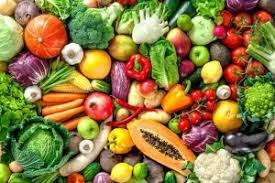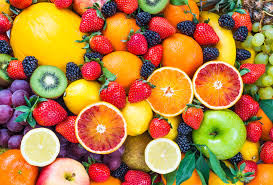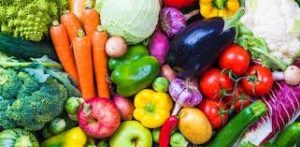The Health Benefits of Vitamin A
Can you see me clearly?
The Health Benefits of
Vitamin A
Vitamin A is a key nutrient for keeping our eyes healthy and our vision keen.
But that’s not all it’s good for. vitamin A helps promote bone growth, keeps
the immune system strong, fights disease as a powerful antioxidant — and
maintains a vigorous reproductive system.
The Recommended Daily
Allowance (RDA) for adult men is 900 mg and 700 mg for adult women.
Here are the top 10 food sources for vitamin A, according to the USDA’s Dietary
Guidelines for Americans.
Carrots
After organ meats, which have as much as 9,000 mg of vitamin A (along with a healthy dose of yuck!) the reliable carrot is the No. 1 source of this essential nutrient. And its vitamin A comes in the form of beta carotene, the much celebrated antioxidant. (It’s also a top source of lycopene, a cancer-fighting phytonutrient.)
Whether you like to eat or drink your carrots, this root vegetable is an excellent source of vitamin A. A three-quarter cup of carrot juice has 1,692 mg of the nutrient and 71 calories. Half a cup of cooked carrots has 671 mg of vitamin A and just 27 calories. But be wary! Carrots are on the dirty dozen list of foods with the most pesticide residue, so buy organic when you can.
Sweet Potatoes
One medium sweet potato has 1,096 mg of vitamin A (in the form of beta carotene) and 103 calories – just don’t forget to eat the skin too!
Pumpkins
If you shy away from the dessert tray, here’s a reason to eat more pumpkin pie! Half a cup of canned pumpkin has 953 mg of vitamin A and only 42 calories. And that vitamin A comes in the form of beta carotene.
Spinach
It may not have the yellow or orange color that’s the hallmark of the other big beta carotene sources, but one half cup of spinach offers a healthy 573 mg of vitamin A and only 30 calories.
Beef
Well, maybe there is one thing we can love about red meat. Beef is a great source of vitamin A. Be sure to pick up the leaner beef in the grocery, and you’re off to a healthy start. Find local grass-fed beef, and you can limit the significant environmental impact of raising livestock
Collards
These leafy greens have 489 mg of vitamin A, plenty of beta carotene, and just 31 calories in one half a cup.
Kale
Another leafy vegetable high in beta carotene/ vitamin A, kale has 478 mg of the nutrient and 20 calories per half cup serving.
Turnip Greens
The greens on this common root vegetable are just as edible as they are nutritious. Half a cup of turnip greens have 441 mg of vitamin A (in the form of beta carotene), 851 μg of vitamin K and just 24 calories — and with vitamin C, folate and calcium as well, they’re far more nutritious than the turnip itself. Try young leaves as an accent to a salad, or boil twice, replacing the water in between, to serve as a side dish. Also look for mustard and dandelion greens for a similar leafy health boost.
Beet Greens
Beet greens are a top source of several nutrients, with 276 mg of Vitamin A (in the form ofbeta carotene), 697 μg of vitamin K, 655 mg of potassium and just 19 calories per half a cup. Like turnip greens, you can find these at your local farmers’ market (or you can grow them yourself). Try substituting this superfood in recipes for collards.
Winter Squash
Packed with almost as much vitamin A as turnip and beet greens — but far more palatable to most casual eaters — winter squash is a delicious source of nutritious beta carotene.



